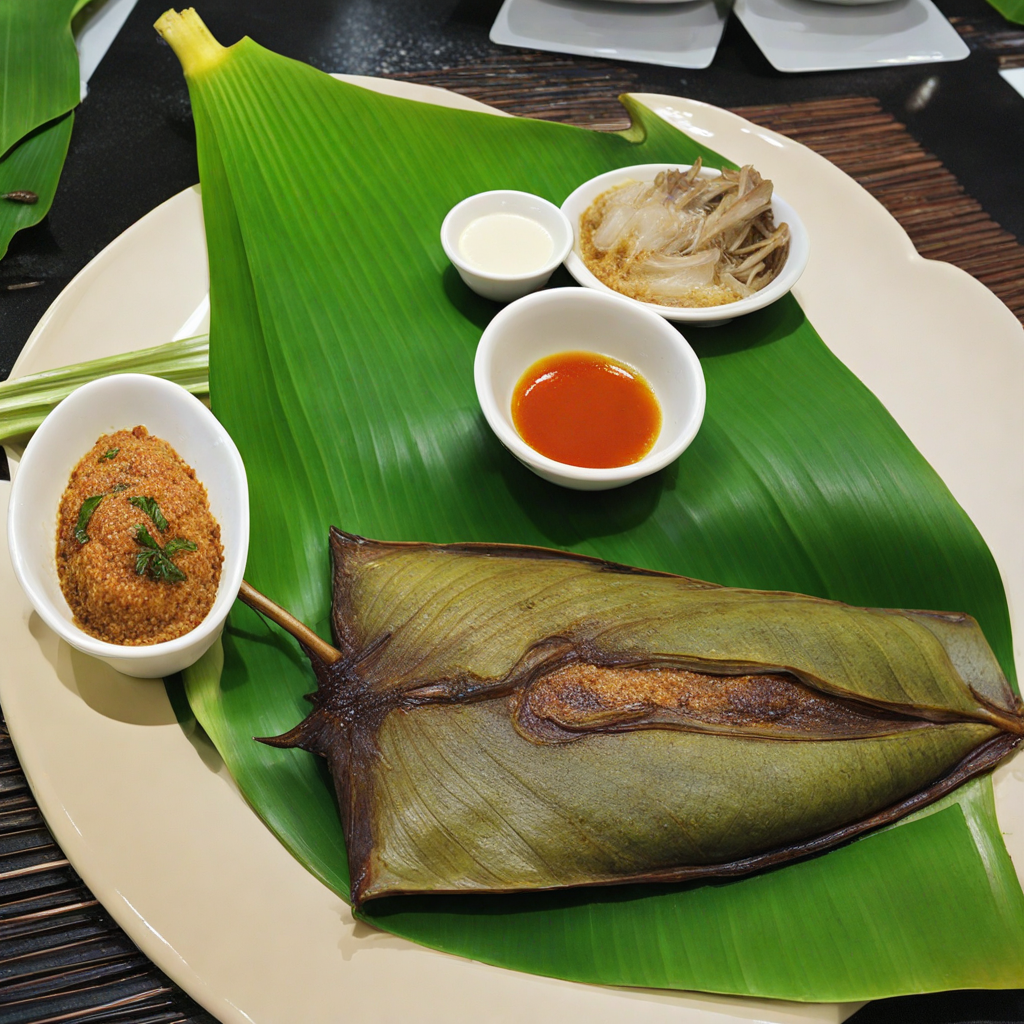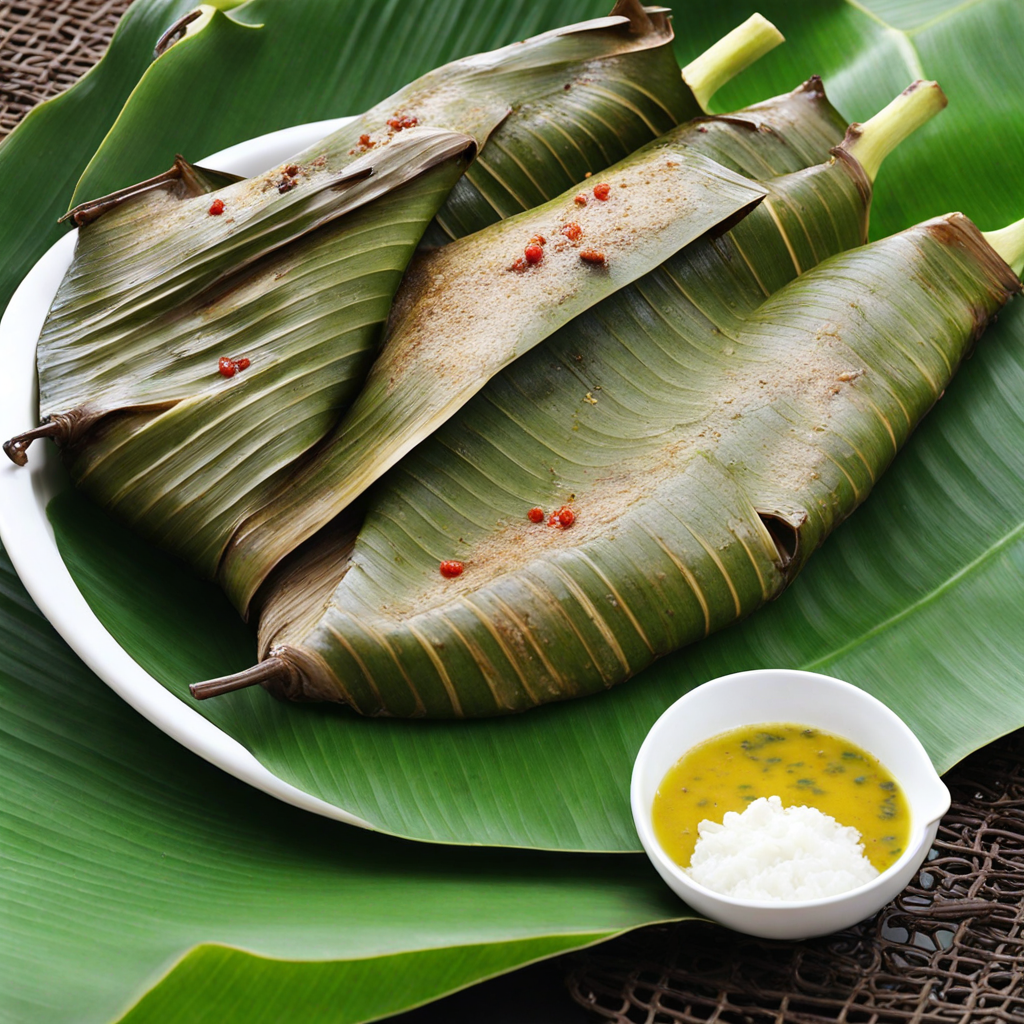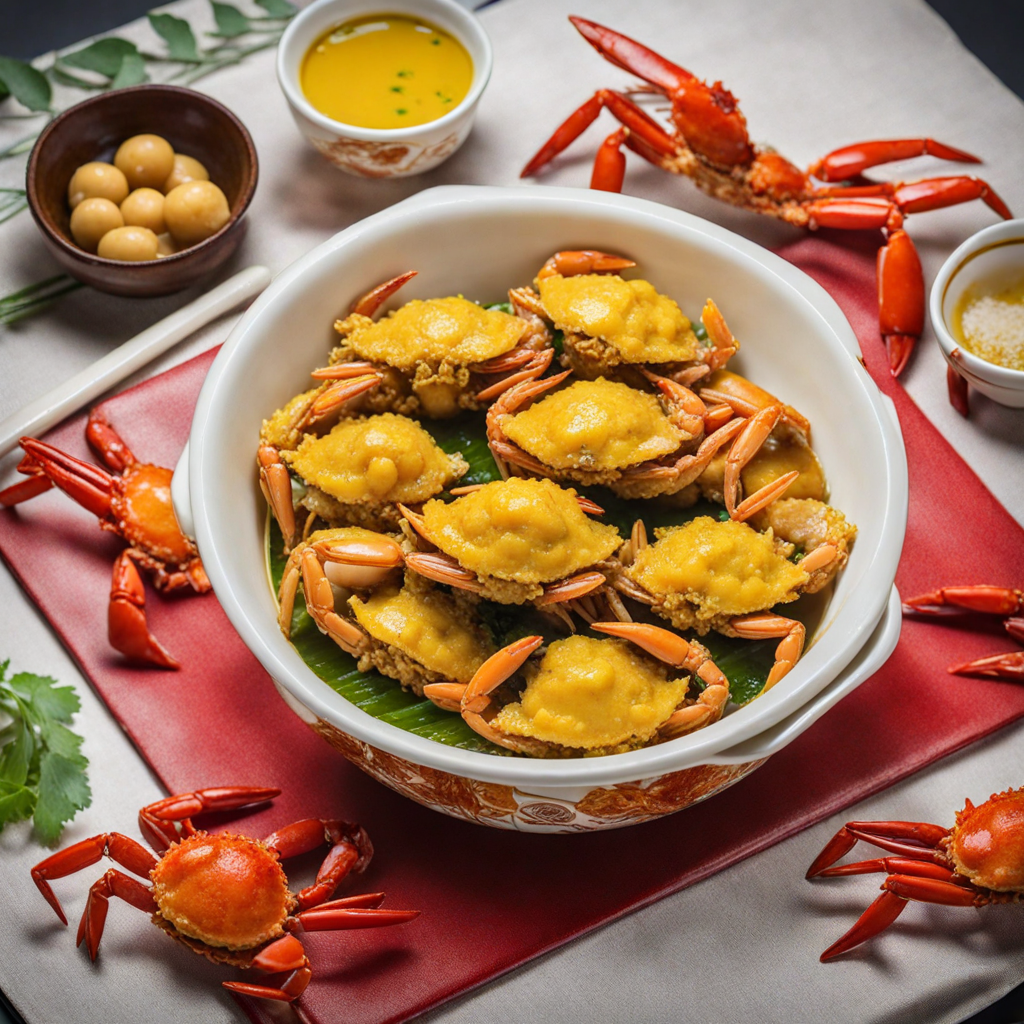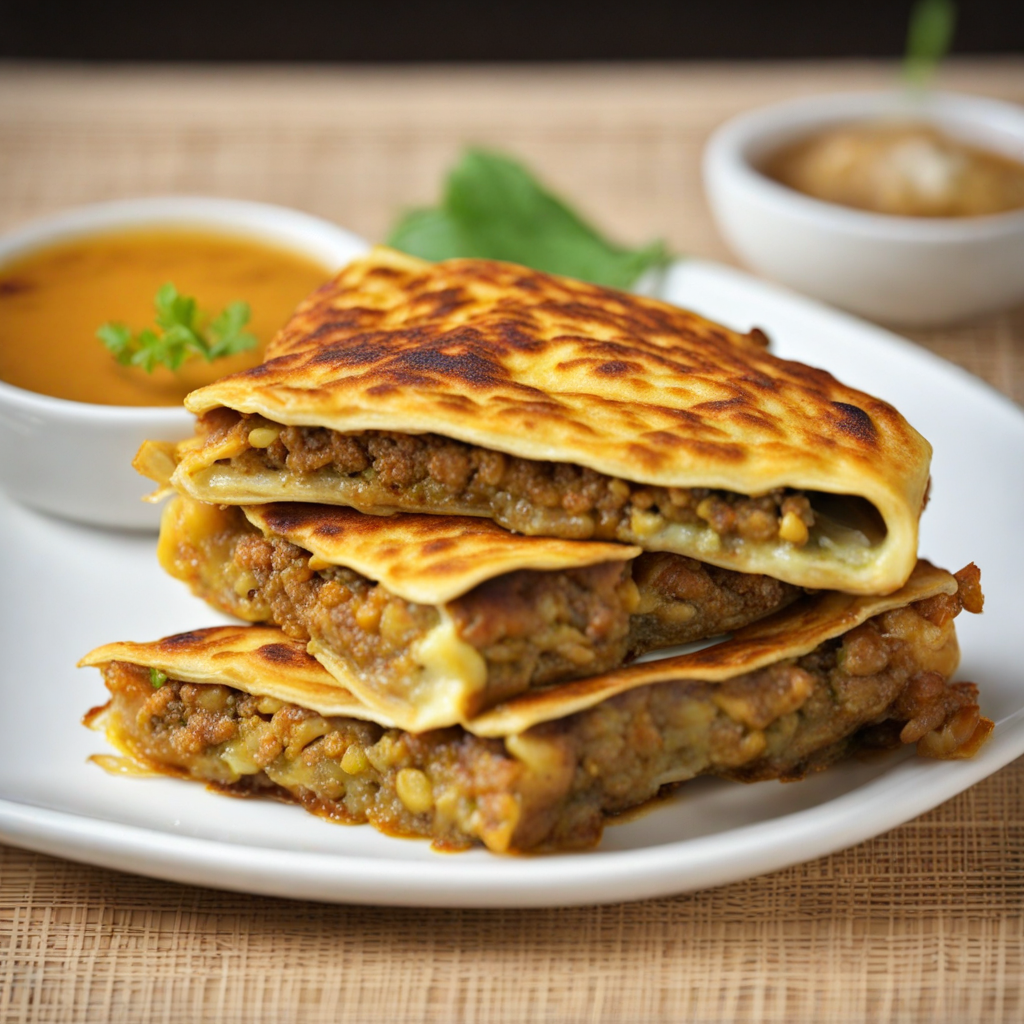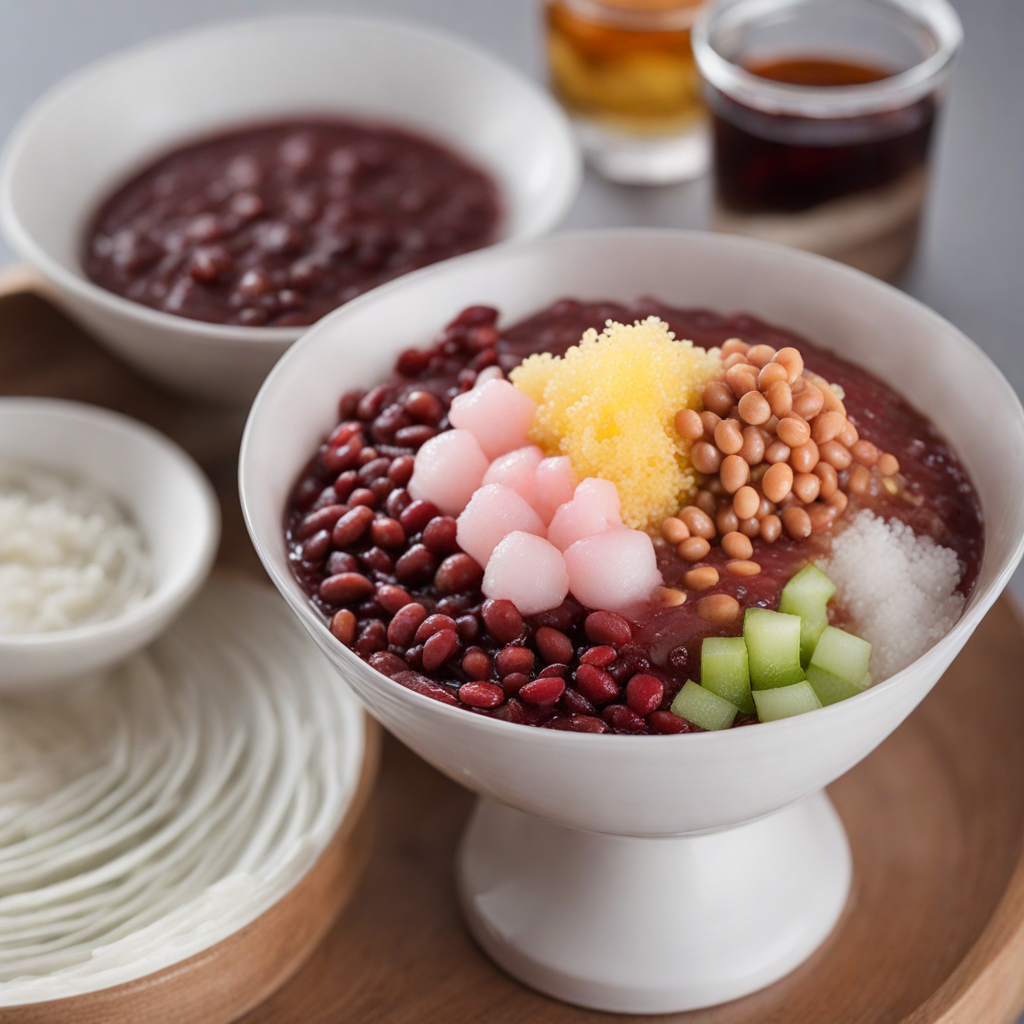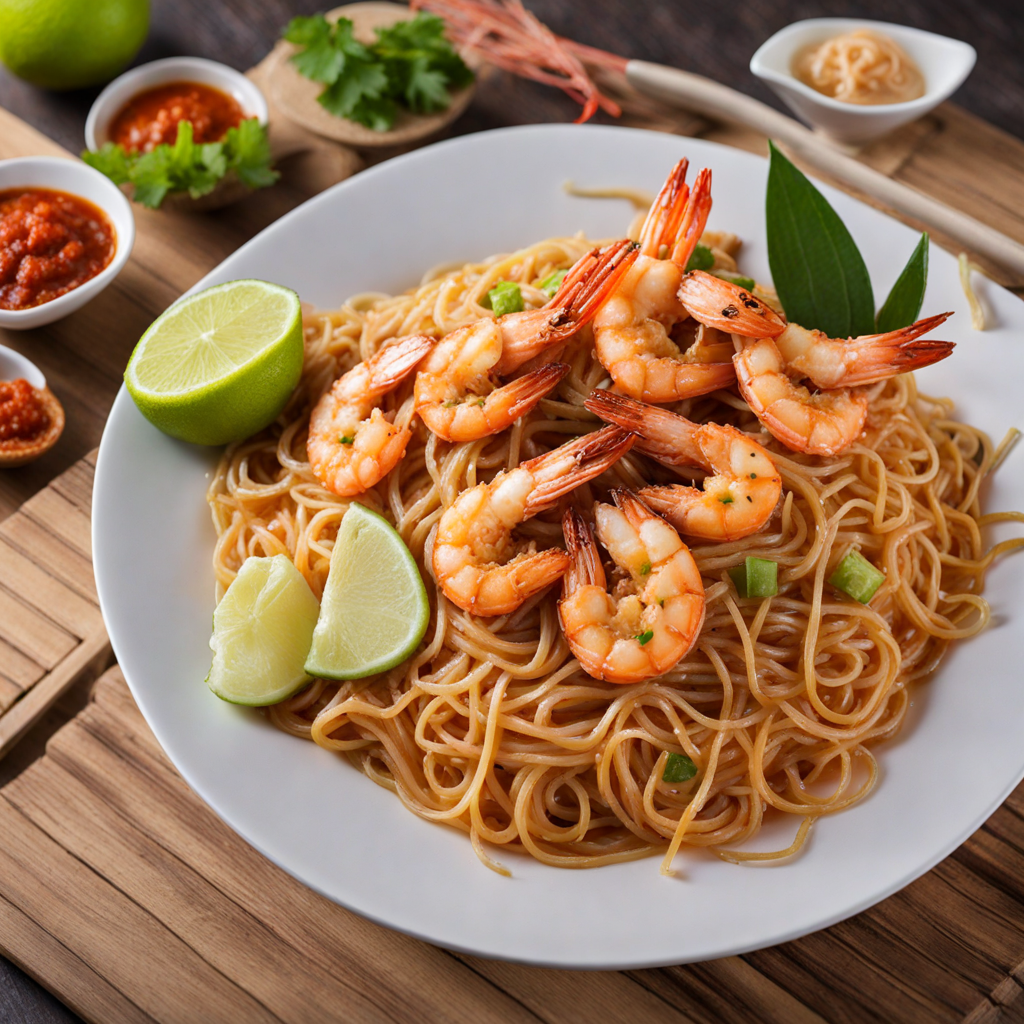Stingray in Banana Leaf
Stingray in Banana Leaf is a delightful dish that showcases the vibrant flavors of Singaporean cuisine. The preparation begins with fresh stingray fillets, which are marinated in a tantalizing mix of spices, often including sambal, a spicy chili paste made with a blend of chili peppers, garlic, and shrimp paste. This marinade infuses the fish with a fiery and aromatic essence, making every bite a burst of flavor. Wrapped in banana leaves, the stingray is not only protected during cooking but also absorbs the subtle sweetness and aroma of the leaves, enhancing the overall taste experience. Once wrapped, the stingray is typically grilled or steamed, allowing the fish to cook to perfection while retaining its moisture and tenderness. The grilling process adds a smoky depth to the dish, creating a contrast between the charred exterior and the soft, flaky fish inside. Served with a side of lime or fresh herbs, the dish invites you to explore the balance of heat and acidity, making it a popular choice among locals and visitors alike. Accompanied by a generous scoop of fragrant rice or a side of vegetables, Stingray in Banana Leaf is a communal dish that brings people together. It's often enjoyed at hawker centers, where the bustling atmosphere adds to the authenticity of the experience. With each mouthful, you’ll find yourself captivated by the unique combination of textures and flavors, making this dish a must-try for anyone eager to dive into the rich culinary landscape of Singapore.
How It Became This Dish
The History of 香蕉叶烤魔鬼鱼 (Grilled Stingray in Banana Leaf) in Singapore #### Origins: A Culinary Fusion Banana Leaf Grilled Stingray, known as 香蕉叶烤魔鬼鱼 (xiāngjiāo yè kǎo móguǐ yú) in Mandarin, is a beloved dish that encapsulates the rich tapestry of Singapore's diverse culinary heritage. Its origins can be traced back to the traditional practices of Southeast Asian coastal communities, where fishing and grilling were integral to daily life. The use of stingray, a flat, cartilaginous fish commonly found in the region's waters, showcases the local abundance of seafood. The dish is believed to have evolved from traditional Malay and Peranakan cooking methods, where fish is often marinated with a blend of spices and grilled over an open flame. The incorporation of banana leaves is not merely a nod to aesthetics; it serves a practical purpose. The leaves infuse the fish with a subtle, earthy aroma while keeping it moist during the cooking process. This technique is deeply rooted in the cooking practices of many Southeast Asian cultures, where banana leaves are commonly used for wrapping and grilling food. #### Cultural Significance: A Symbol of Community In Singapore, food is more than just sustenance; it is a vessel of cultural identity and community. Grilled Stingray has become emblematic of the nation's multicultural landscape, reflecting the culinary influences of the Malay, Chinese, and Indian populations. It is often found at hawker centers—Singapore's vibrant street food hubs—where it is served alongside traditional accompaniments like sambal (a spicy chili paste), rice, and various vegetables. The dish is particularly popular in the context of communal dining. Sharing grilled stingray among family and friends is a common practice, embodying the values of togetherness and hospitality that are central to Singaporean culture. Moreover, its presence at festive occasions and celebrations underscores its role as a food that brings people together, transcending ethnic boundaries. #### Development over Time: From Street Food to Culinary Icon As Singapore's culinary scene evolved, so too did the perception and presentation of grilled stingray. In the 1980s and 1990s, the dish found its way into the mainstream, largely attributed to the rise of hawker culture and the growing popularity of outdoor barbecues. Vendors began experimenting with different marinades and cooking techniques, leading to a variety of flavors and styles. The sambal used in the dish became a canvas for culinary creativity, with some vendors incorporating ingredients like belacan (fermented shrimp paste), lime juice, and even coconut milk to create unique variations. The demand for grilled stingray surged as Singaporeans sought to celebrate their rich heritage through food. It began to appear not just in hawker centers but also in restaurants, where chefs elevated its presentation and flavor profiles. The dish became a staple at food festivals and culinary events, showcasing the best of Singaporean street food to both locals and tourists. In recent years, there has been a renewed interest in traditional food practices, with chefs and home cooks alike exploring the depths of heritage cooking. This revival has led to a new appreciation for grilled stingray, with some chefs experimenting with fusion elements, incorporating influences from Western cooking techniques while maintaining the traditional essence of the dish. #### Modern-Day Influence: A Culinary Experience Today, grilled stingray is more than just a dish; it is a culinary experience that captures the spirit of Singapore. Street vendors continue to serve it at bustling hawker centers, while upscale restaurants have elevated it to gourmet status, showcasing the versatility of this beloved dish. It is often paired with sides like fried rice, pickled vegetables, and even Western-style salads, illustrating the adaptability of Singaporean cuisine. Tourists visiting Singapore are often introduced to grilled stingray as part of their culinary journey. Food tours and cultural experiences highlight the dish, allowing visitors to engage with local flavors while learning about the significance behind each ingredient and cooking method. The dish has also found its way into social media, with vibrant photos of grilled stingray wrapped in banana leaves captivating food enthusiasts worldwide. #### Sustainability and Future Directions As the culinary landscape shifts toward sustainability, the fishing methods used for stingray and other seafood have come under scrutiny. Awareness of overfishing and environmental impact has led to a growing emphasis on sourcing fish responsibly. Many vendors and restaurants are now committed to using sustainably caught stingray, ensuring that this cherished dish can continue to be enjoyed for generations to come. Additionally, the rise of plant-based diets and alternative proteins has prompted some chefs to create innovative vegetarian or vegan versions of grilled stingray, using ingredients like jackfruit or tofu. This trend reflects a broader movement toward inclusivity in the culinary world, ensuring that traditional dishes can be enjoyed by a wider audience. #### Conclusion: A Dish That Defines a Nation In essence, 香蕉叶烤魔鬼鱼 (Grilled Stingray in Banana Leaf) serves as a delicious metaphor for Singapore itself: a melting pot of cultures, traditions, and flavors. Its journey from humble beginnings as a local fishing community staple to a culinary icon reflects the evolution of Singaporean identity. As it continues to adapt and thrive, grilled stingray remains a testament to the resilience and creativity of the nation's food culture. Whether enjoyed at a bustling hawker center or a fine dining establishment, this dish encapsulates the warmth of community, the richness of heritage, and the promise of culinary innovation. As Singapore moves forward, the legacy of grilled stingray will undoubtedly continue to play a vital role in shaping the country's gastronomic landscape, bringing together people from all walks of life to share in the joy of food.
You may like
Discover local flavors from Singapore


